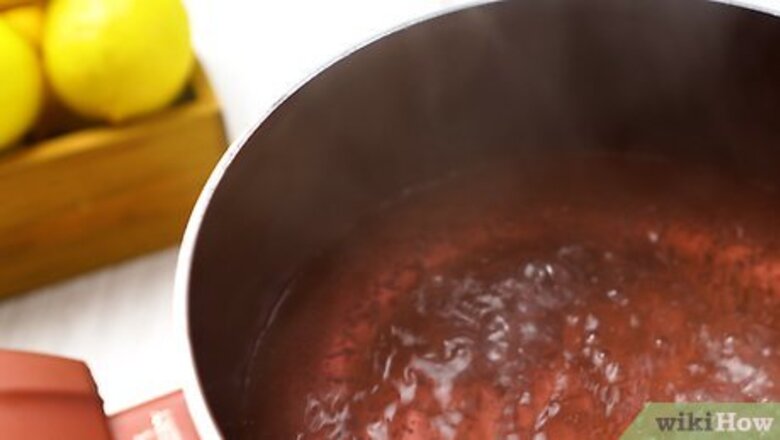
views
- Pour boiling water over lemons in a colander to break up the wax with heat. Then scrub the lemons under cool water and pat them dry with a towel.
- Microwave the lemons for 10-20 seconds to soften the wax. Then scrub it away with a brush or sponge under cool water, and pat the lemons dry.
- Mix equal parts of warm water and white vinegar in a spray bottle, then thoroughly spritz the lemons with the mixture. Let them sit for 3-5 minutes, then rinse them.
Using Boiling Water
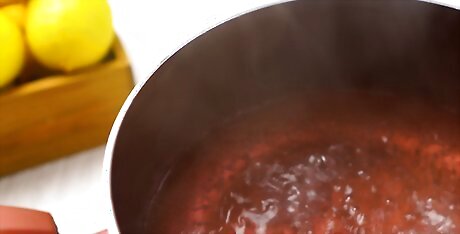
Boil water in a pot or a kettle. Fill a pot or a kettle halfway with water and bring the water to a boil on the stove over medium-high heat. If you’re short on time, use hot tap water instead of boiled water. Make sure that the tap water is as hot as possible before pouring it over the lemons.
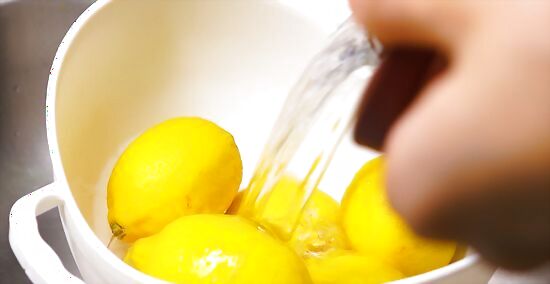
Place the lemons in a colander and pour the boiling water over them. As the water comes to a boil, arrange 3-4 lemons in a heat-proof colander. Set the colander in the sink. Then pour the boiling water slowly over the lemons to heat up and loosen the wax. After an initial rinse, flip the lemons in the colander with a fork to expose their other sides, then give that side a boiling water rinse, as well. Work with only a few lemons at a time to ensure you’ve rinsed each lemon thoroughly.
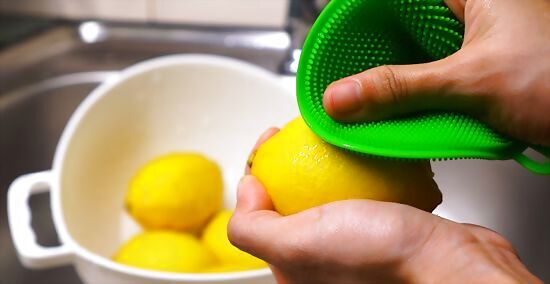
Scrub away the remaining wax with a sponge or a vegetable brush. Hold each lemon under cool, running water, and use the abrasive side of a clean, unused sponge to gently rub away the wax. Alternatively, use a vegetable brush, and scrub in small circles. It’s hard to say when you’ve completely removed the wax, since the wax is often almost invisible. Scrub each lemon all over for 30-60 seconds each to make sure you’ve removed it all. Avoid using a brush or sponge that’s already been used for dishes. Soap or food residue inside the brush could get onto the fruit and contaminate the peel.
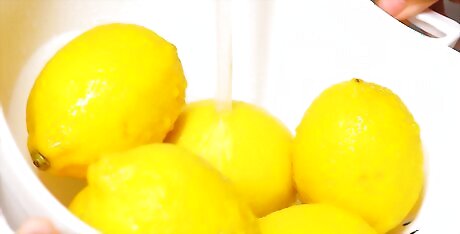
Rinse the lemons with cool water and pat them dry with a paper towel. Wash the fruit with a final rinse to remove any additional wax residue. Then, pat and wipe each lemon dry with a paper towel or a kitchen towel. They’re ready to use! Alternatively, place your lemons on a towel and air dry them on the counter for about an hour. If you’re not using the lemons immediately, store them in the fridge for 1-2 days. Dewaxed lemons tend to spoil more quickly than waxed lemons.
Microwaving the Wax Off
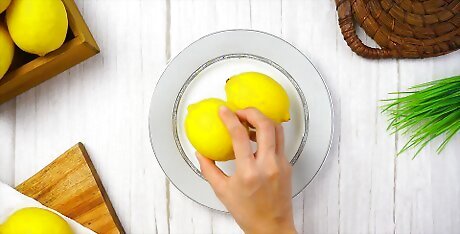
Place the lemons on a microwave-safe plate. Line a microwave-safe plate or other dish with paper towels. Then, arrange the lemons in a single layer on the dish. If possible, arrange them so that they aren’t touching. Avoid stacking the lemons on the plate. Stacking them can result in uneven heating, which may make it difficult to fully strip away the wax.

Microwave the lemons on high for 10 to 20 seconds. Place the plate of fruit in the microwave. Run the microwave on high for 10 seconds if you’re only working with 2-3 lemons, and 20 seconds if you’re dewaxing more. The heat from the microwave helps melt the wax. The softened wax will be easier to remove from the peel.

Scrub the fruit under cool running water. Using a vegetable brush or a clean, unused sponge, lightly scrub the peel of each lemon while holding it under a cool faucet. Use small, circular motions, and scrub the entire surface of the lemon for 30-60 seconds to scrub away all the wax. Avoid using sponges or brushes that have been in contact with soap or other food, since these can contaminate the lemon rind.
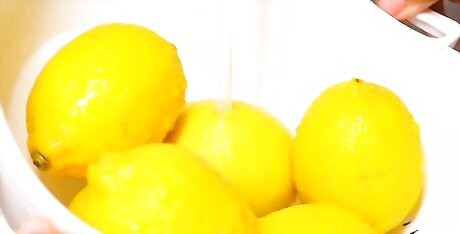
Rinse the lemons with cool water, then dry them with a paper towel. After a good scrub, place the lemons under cool, running water to rinse away any wax residue. Then, pat the lemons dry with a paper towel or kitchen towel. If you’re not using your dewaxed lemons right away, refrigerate or freeze them to keep them from spoiling.
Making a Vinegar Spray
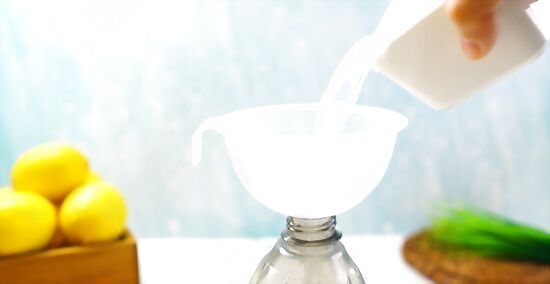
Combine equal parts of warm water and white vinegar in a spray bottle. Pour about 1 cup (240 mL) of both warm water and white vinegar into a spray bottle, and shake the bottle to combine the mixture and make a handy vegetable wash. Alternatively, use a premade, commercial fruit and vegetable wash rather than mixing your own. Make a milder fruit and veggie wash by combining 1 tablespoon (15 mL) of lemon juice, 2 tablespoons (30 mL) of vinegar, and 1 cup (240 mL) of warm water.
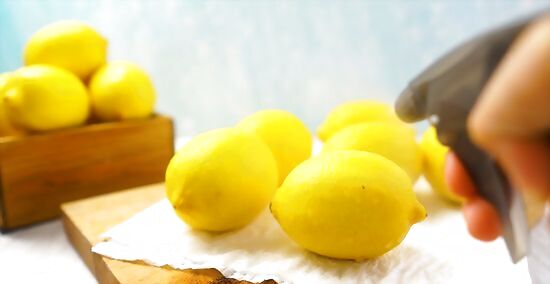
Spritz the lemons with the vinegar mixture and let them sit for 3-5 minutes. Place the lemons on a dish or in a colander. Then, thoroughly douse all sides of the peel of each lemon with the vinegar cleaning solution. Let the solution soak onto the lemons for 3-5 minutes, allowing time for the solution’s acidity to break up and dissolve the wax.
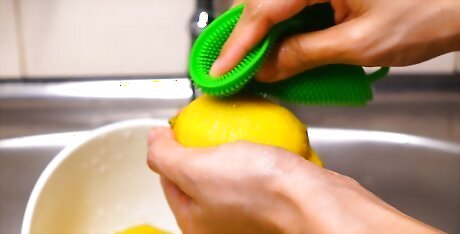
Scrub the lemons under cool running water. Using a vegetable brush or a clean, unused sponge, scrub the lemons with gentle, but firm, circular motions. Make sure to scrub every inch of each lemon to completely remove the wax. Scrub each lemon for 30-60 seconds to thoroughly rub away the wax. Use a new or clean sponge that hasn’t come into contact with soap or food to prevent contaminating the lemon peel.

Rinse the scrubbed lemons under cool water and pat them dry. After you finish scrubbing the lemons, rinse each lemon under running water, using your fingers to brush away any remaining wax residue. Then, pat the lemons dry with a paper towel.



















Comments
0 comment